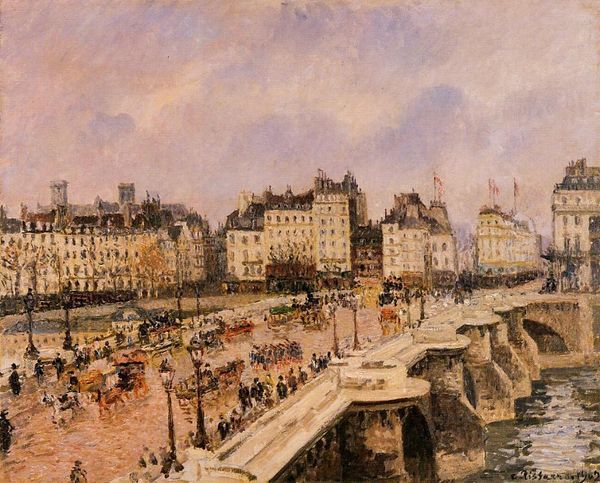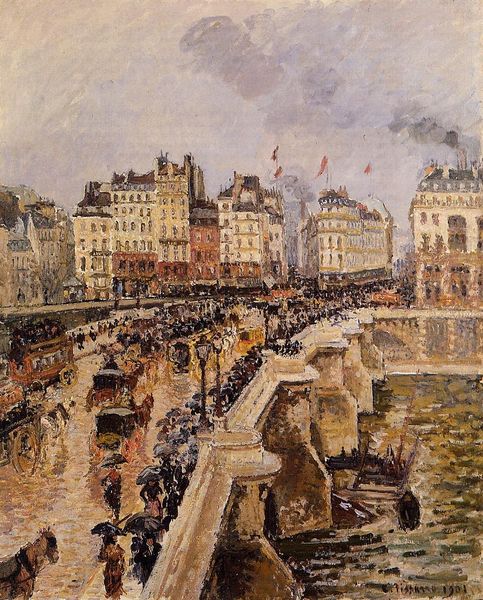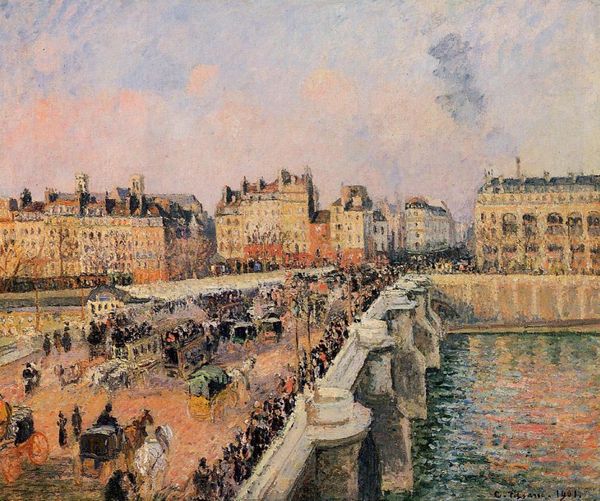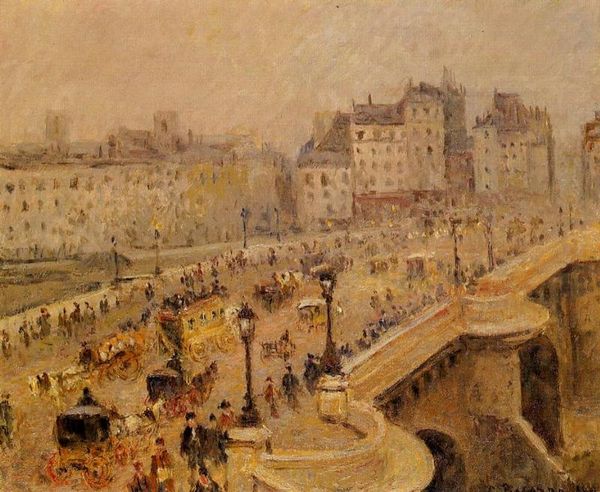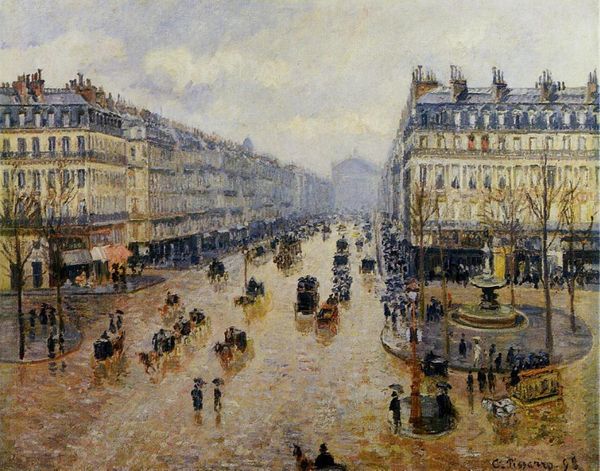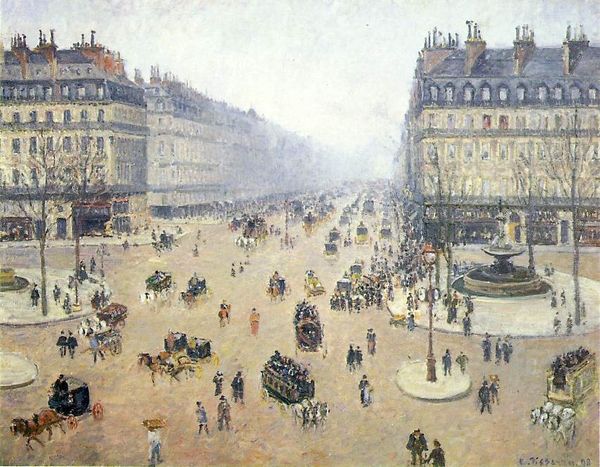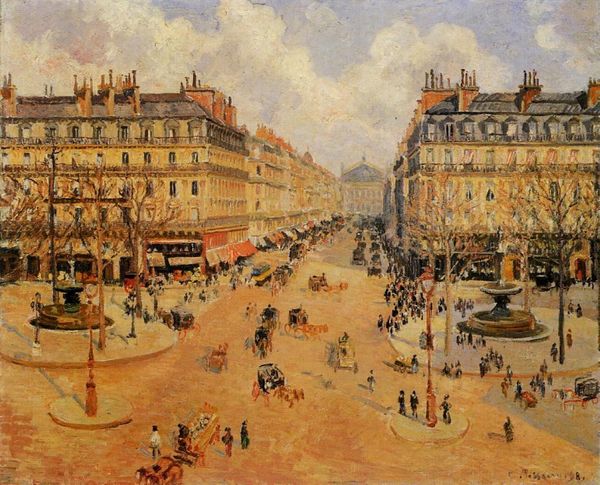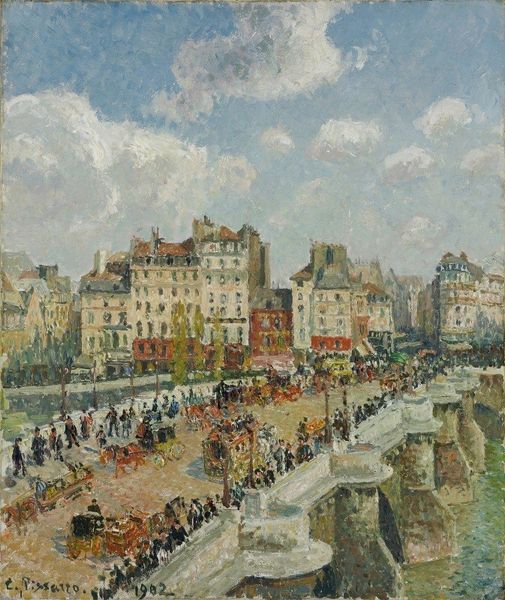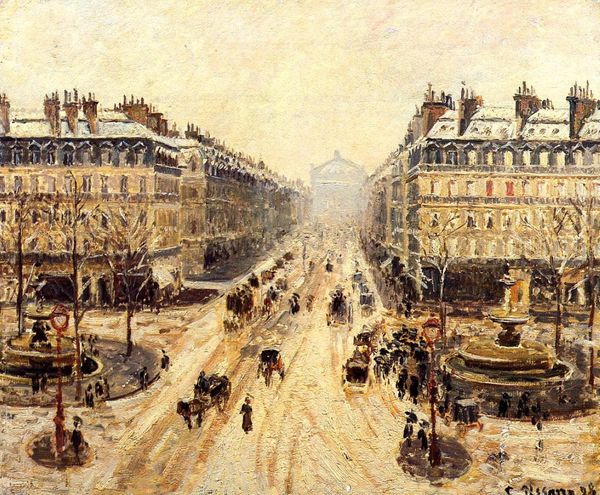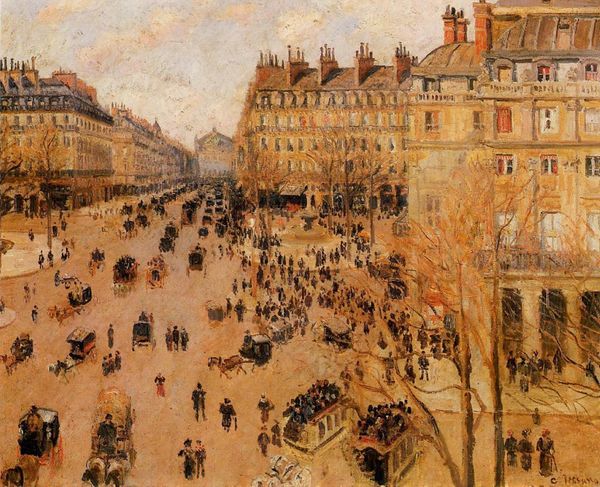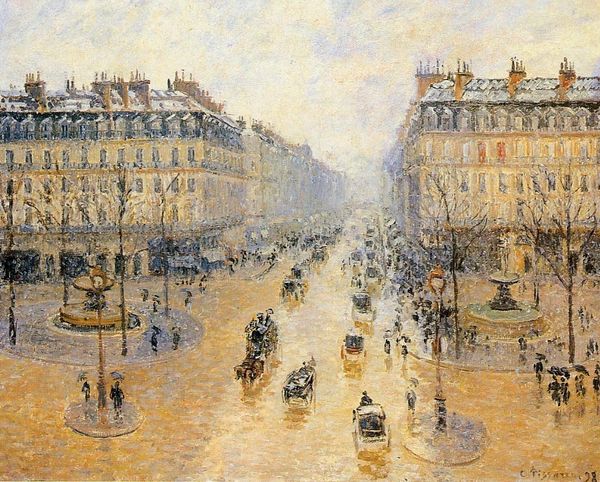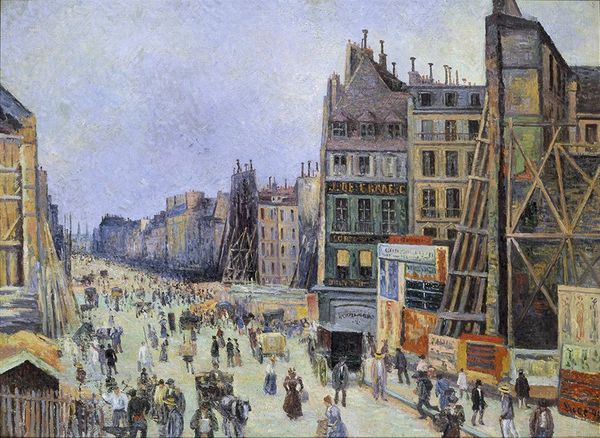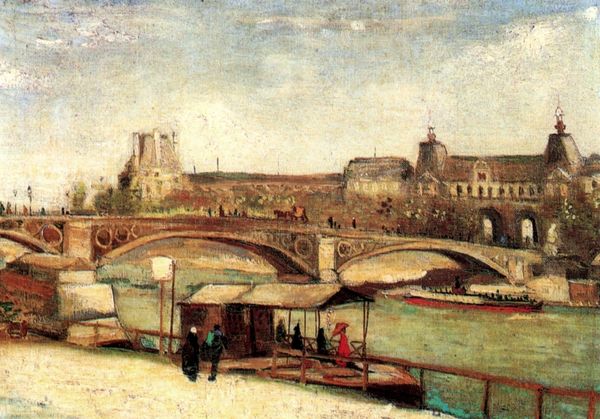
Dimensions: 65.8 x 81.3 cm
Copyright: Public domain
Editor: This is Camille Pissarro’s “The Pont Neuf, Shipwreck of the Bonne Mere” from 1901. Looking at it, I'm struck by the sheer energy of the scene; the busy bridge juxtaposed with what seems like an industrial smokestack looming in the background. It feels so modern. What do you see in this piece? Curator: Well, focusing on the materiality, Pissarro's brushstrokes aren't just depicting a scene. They're embodying the bustling, industrial era of Paris at the turn of the century. That "energy" you sense? It's tied directly to the means of production. Look closely; the marks themselves mimic the rapid, repetitive actions of labor in a burgeoning city. Editor: That’s interesting. So you're saying it's not just a snapshot, but a commentary on industrialization through the very act of painting? How does that challenge the traditional separation of “high art” from, say, craft or even industry itself? Curator: Exactly! Impressionism, on the surface, captured fleeting moments. But Pissarro, grounded in social realities, infused it with a material awareness. Oil paint, traditionally a tool for portraying idealized subjects, is here used to depict – and almost participate in – the grit and speed of modern labor and urban expansion. The "shipwreck" in the title itself hints at the disruptions industrialization caused. What materials went into building that bridge, and what human cost was associated with its construction and use? Editor: I hadn’t thought about it that way. I was mostly focused on the colors and the kind of hazy atmosphere, but now I’m wondering what it was like to live there at that moment. Curator: Precisely! And how Pissarro's methods reflect, question, and even resist the processes shaping that reality. Considering materials this way adds a new layer of interpretation, don't you think? Editor: It definitely does. Thanks for sharing a great insight, I'm now appreciating the historical context deeply ingrained into the brushwork itself.
Comments
No comments
Be the first to comment and join the conversation on the ultimate creative platform.
